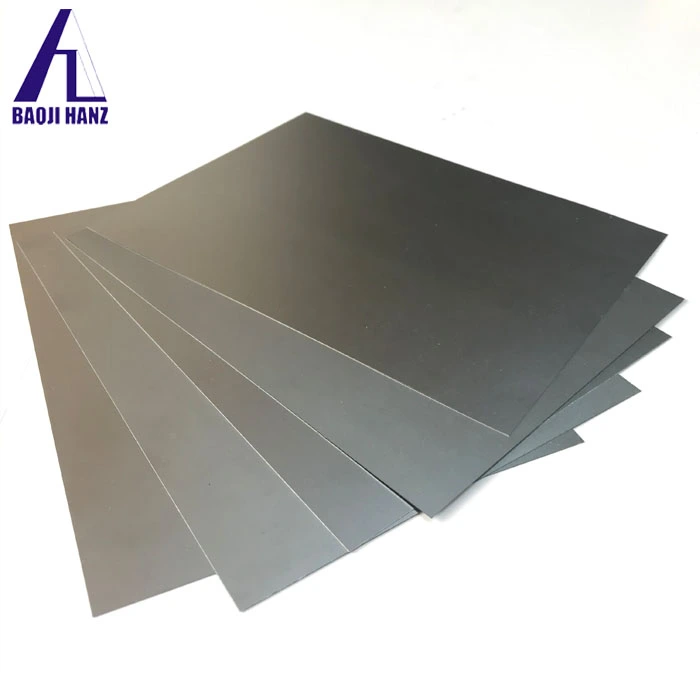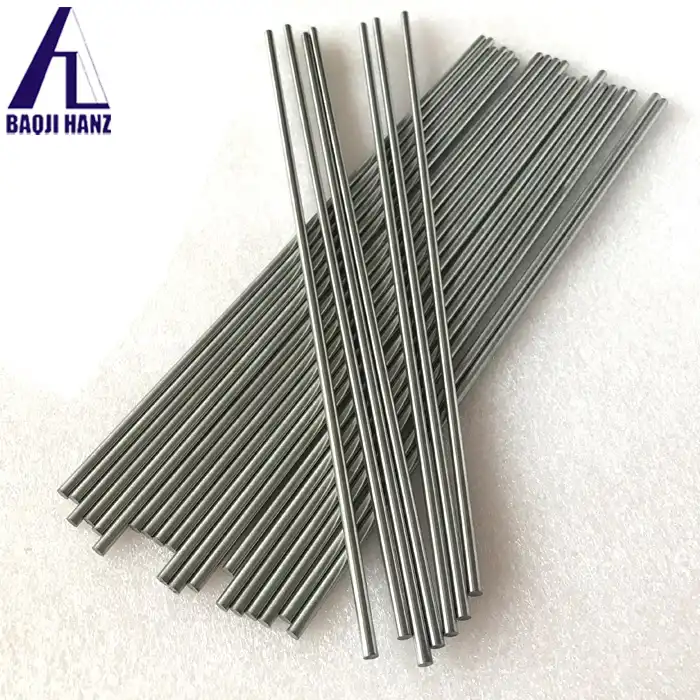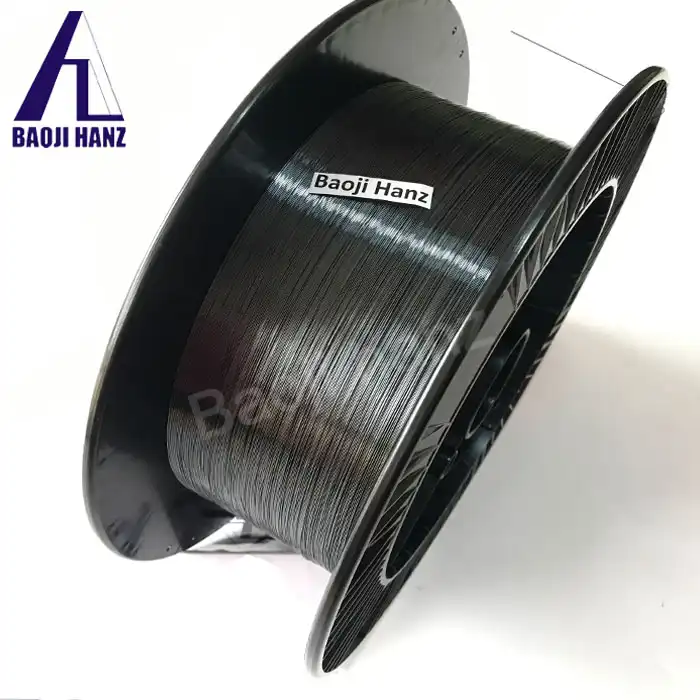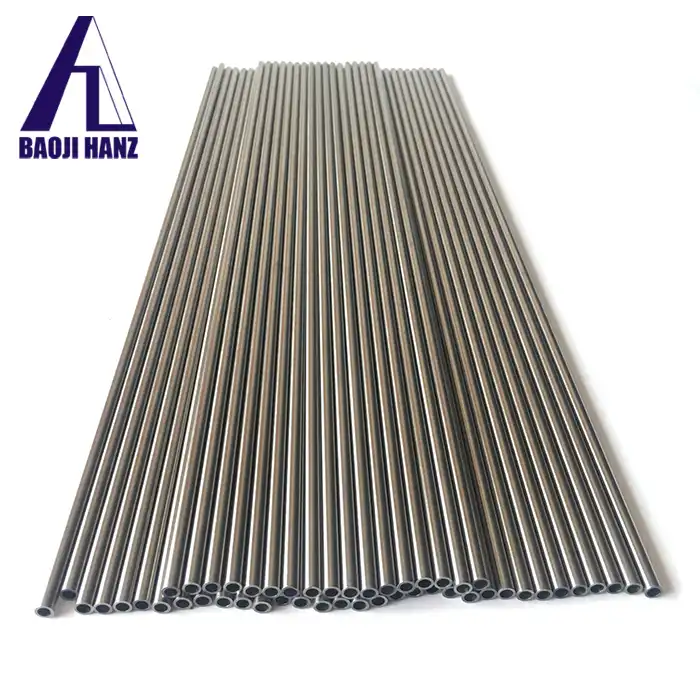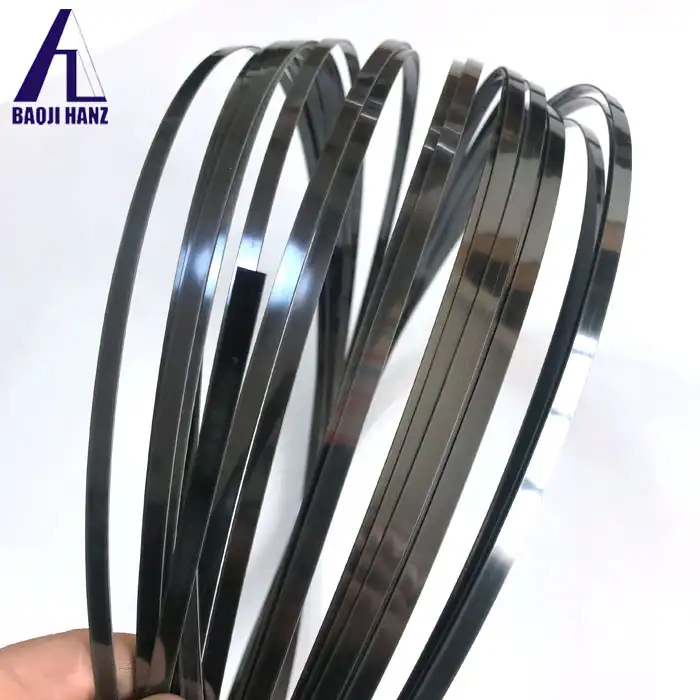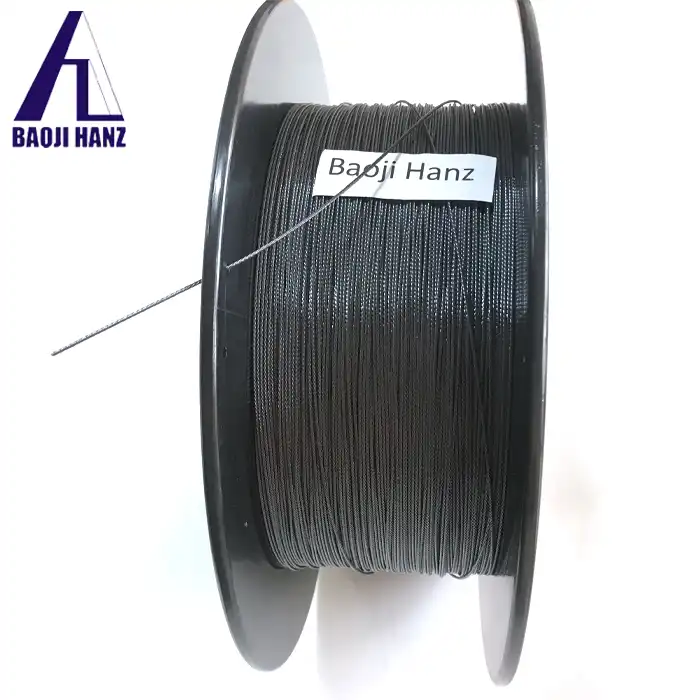How do you weld or join Nickel Titanium seamless tubes?
2025-03-28 18:47:37
Welding or joining Nickel titanium seamless tubes presents unique challenges due to the material's special properties. Nitinol, the nickel-titanium alloy used in these tubes, exhibits shape memory and superelasticity that can be compromised during traditional joining processes. This article explores various methods for effectively welding and joining Nickel titanium seamless tubes while preserving their remarkable properties, providing insights for engineers and manufacturers working with these advanced materials.
Advanced Welding Techniques for Nitinol Tubes
Laser Welding Technology
Laser welding has emerged as one of the most effective techniques for joining Nickel titanium seamless tubes. This precision method utilizes concentrated laser beams to create localized heat at the joining interface, minimizing the heat-affected zone and preserving the unique properties of the material. The Nickel titanium seamless tube responds exceptionally well to laser welding when properly controlled parameters are used. At Baoji Hanz Metal Material Co., Ltd., our Nitinol seamless tubes manufactured to ASTM F2063/GB24627 standards with outer diameters ranging from 0.20-15.0mm and wall thicknesses from 0.025-3.0mm can be successfully laser welded with minimal property degradation. The smooth surface of our tubes (outer surface Ra≤ 0.4μm, inner surface Ra≤ 0.6μm) facilitates clean welds with excellent joint integrity. The superior mechanical properties of nickel titanium alloy, particularly its exceptional superelasticity and shape memory, can be largely maintained when laser welding is performed under controlled atmospheric conditions with appropriate power settings and pulse durations. This makes laser welding ideal for applications in interventional catheters, valve stents, and peripheral stents where joint strength and performance cannot be compromised.
Resistance Welding Applications
Resistance welding provides another viable solution for joining Nickel titanium seamless tubes, particularly for smaller diameter applications. This process utilizes electrical resistance to generate heat at the contact points between tube sections. The high electrical conductivity of Nickel titanium seamless tubes makes them suitable candidates for resistance welding when joint designs are properly engineered. Our seamless tubes with their high material purity (loose and metal inclusion ≤ 12.0um; loose and non-metallic inclusions area percentage ≤0.5%) ensure consistent electrical properties throughout the material, resulting in uniform welds. The excellent fatigue resistance of our Nitinol tubes remains largely intact after resistance welding when proper parameters are applied, making this joining method appropriate for critical medical applications like nerve interventional stents. Resistance welding offers advantages in terms of production speed and cost-effectiveness for many applications. The process can be carefully controlled to maintain the corrosion resistance properties of the nickel titanium alloy, which is crucial for applications in harsh environments. By controlling the current, pressure, and weld time, manufacturers can create strong joints without significantly compromising the biocompatibility that makes Nickel titanium seamless tubes so valuable in medical device manufacturing.
Electron Beam Welding Considerations
Electron beam welding represents a high-precision option for joining Nickel titanium seamless tubes, especially in applications requiring deep penetration and narrow heat-affected zones. This vacuum-based process directs a concentrated beam of electrons at the joint, creating intensive heat for precise welding. For Nickel titanium seamless tubes with wall thicknesses ranging from 0.1mm to 2mm, electron beam welding provides exceptional control over weld characteristics. The vacuum environment prevents oxidation during the welding process, which is particularly important for maintaining the thermal stability and shape memory effect of Nitinol. Our ISO9001:2015 and ISO13485:2016 certified tubes respond predictably to electron beam welding, preserving their superelasticity characteristics even after joining. This method is particularly valuable for aerospace and high-end medical device applications where weld quality must meet stringent requirements. The high strength of Nickel titanium seamless tubes is largely maintained through electron beam welding due to the minimal heat input and rapid cooling that occurs. This welding approach can be specially calibrated to work with the unique crystalline structure of Nitinol alloys, ensuring that the welded section maintains adequate strength and flexibility for demanding applications like valve stents and other implantable devices that undergo cyclic loading.
Mechanical Joining Methods
Crimping and Swaging Techniques
When heat-affected zones must be completely avoided, crimping and swaging offer excellent mechanical joining alternatives for Nickel titanium seamless tubes. These cold-working techniques utilize pressure to create mechanical interlocks between tube sections or between tubes and other components. The superelasticity of Nickel titanium seamless tubes makes them particularly suitable for crimping applications, as they can withstand significant deformation during the process without fracturing. Our tubes, with outer diameter ranges from 0.20-15.0mm, can be effectively crimped using specialized tooling that controls the deformation profile. The corrosion resistance of the nickel titanium alloy remains completely unaffected by crimping processes, making this joining method advantageous for applications in corrosive environments. The biocompatibility of the material is preserved as well, which is crucial for medical applications where patient safety is paramount. Crimping creates secure mechanical joints that maintain the flexibility of the overall assembly, an important consideration for interventional catheters that must navigate tortuous anatomical pathways. The customization possibilities we offer for various diameters and wall thicknesses enable optimized crimping designs that maximize joint strength while minimizing profile increases at connection points.
Mechanical Fastening Systems
For applications where disassembly may be required, specialized mechanical fastening systems have been developed specifically for Nickel titanium seamless tubes. These systems utilize custom-designed components that can secure tube sections without compromising material properties. The unique shape memory effect of Nickel titanium seamless tubes can actually be leveraged in certain fastening designs, creating "active" fasteners that tighten with temperature changes. Our tubes manufactured to ASTM F2063-12 and GB24627 standards provide the dimensional consistency necessary for reliable mechanical fastening system performance. The high tensile strength of Nickel titanium seamless tubes supports the use of threaded connections and other mechanical fastening approaches that might cause failure in less robust materials. In electronics applications, where Nitinol tubes serve as connectors and sensors, mechanical fastening often provides the ideal balance of electrical conductivity and mechanical integrity. The thermal stability of the alloy ensures that mechanically fastened joints maintain their performance characteristics even in high-heat environments. Specialized collet systems, compression fittings, and custom-designed clamps have all been successfully implemented for joining Nickel titanium seamless tubes in various industrial applications, from automotive performance parts to aerospace components that must withstand extreme conditions.
Interference Fit Methodology
Interference fitting represents an elegant solution for joining Nickel titanium seamless tubes by exploiting the material's unique thermal expansion properties. By precisely controlling the dimensions of mating components and utilizing temperature differentials, extremely strong mechanical joints can be created without welding. The shape memory characteristics of Nickel titanium seamless tubes can be strategically employed to create self-adjusting interference fits that tighten or loosen with temperature changes, enabling smart joint designs. Our ready stock of tubes with various wall thicknesses from 0.025-3.0mm provides options for designing optimal interference fits across a range of applications. The biocompatibility of the material remains uncompromised when joined through interference fits, making this approach highly suitable for medical devices that will contact human tissue. The impressive tensile strength of Nickel titanium seamless tubes allows for significant interference percentages without material failure, resulting in exceptionally secure joints. For applications in aircraft components and actuators, interference fits provide reliable connections that maintain their integrity even under vibration and thermal cycling. When properly designed, these joints can effectively transmit both torsional and tensile loads while preserving the superelastic properties that make Nickel titanium seamless tubes so valuable in high-performance applications like automotive systems subjected to varying temperatures and pressures.
Adhesive Bonding Solutions
Medical-Grade Adhesive Applications
For certain applications, particularly in the medical device sector, adhesive bonding offers distinct advantages for joining Nickel titanium seamless tubes. Modern medical-grade adhesives have been specifically formulated to bond with Nitinol while maintaining biocompatibility for implantable and interventional devices. The smooth surface of Nickel titanium seamless tubes (outer surface Ra≤ 0.4μm) provides an excellent substrate for adhesive bonding when proper surface preparation procedures are followed. Our tubes, extensively used in interventional catheters and stents, can be effectively joined using appropriate adhesives that maintain performance during sterilization processes. The corrosion resistance of the nickel titanium alloy remains unaffected by most medical-grade adhesives, ensuring long-term stability in physiological environments. Adhesive joining can be particularly advantageous when connecting Nitinol tubes to dissimilar materials, solving the challenges of direct welding between different metals. The flexibility of bonded joints can be tailored through adhesive selection to match specific application requirements, from rigid connections to those allowing controlled movement. For applications requiring temporary joining during assembly processes, specialized temporary adhesives compatible with Nickel titanium seamless tubes have been developed that can later be removed without damaging the base material, providing manufacturing flexibility without compromising the shape memory effect or superelasticity that makes these tubes ideal for medical applications.
Industrial Epoxy Systems
For industrial applications requiring high-strength bonds, specialized epoxy systems have been developed specifically for joining Nickel titanium seamless tubes. These advanced formulations offer excellent shear strength, temperature resistance, and durability even in harsh environments. The thermal stability of Nickel titanium seamless tubes makes them compatible with epoxies that require elevated cure temperatures, allowing for accelerated manufacturing processes. Our tubes meeting EU CE Safety standards provide consistent bonding surfaces that ensure reliable adhesive joint performance in critical applications. The customization options we offer enable tubes to be specially prepared for optimal adhesive bonding through treatments that enhance surface energy and adhesion. Industrial epoxy systems can effectively join Nickel titanium seamless tubes for applications in aircraft sensors, automotive components, and electronic connectors where welding might compromise critical properties. The high strength of modern epoxy systems complements the impressive tensile strength of Nitinol tubes, creating joints capable of handling heavy loads without compromising structural integrity. For applications where electrical isolation between tube sections is required, epoxy joining provides natural insulation properties not achievable with direct metal-to-metal connections. The versatility of epoxy systems allows for joining Nickel titanium seamless tubes in complex geometries and configurations that might be difficult to achieve through welding processes.
Cyanoacrylate Bonding Techniques
For rapid assembly and production environments, cyanoacrylate adhesives provide fast-curing solutions for joining Nickel titanium seamless tubes in certain applications. These "instant" adhesives create bonds within seconds to minutes, dramatically reducing assembly time compared to welding or epoxy bonding. The superelasticity of Nickel titanium seamless tubes often necessitates fixtures during cyanoacrylate curing to maintain precise alignment, but the process remains significantly faster than alternatives. Our tubes, available with MOQs as low as 5 pieces, can be effectively joined for prototyping and small-batch production using appropriate cyanoacrylate formulations. The corrosion resistance of the tubes remains intact with properly selected adhesives that don't promote galvanic reactions. Modern industrial cyanoacrylates offer improved temperature resistance and impact strength compared to earlier generations, making them suitable for joining Nickel titanium seamless tubes in less demanding applications where the shape memory characteristics of the material aren't primary functional requirements. In electronics applications, where Nitinol tubes serve as protective housings or structural components, cyanoacrylate bonding provides quick assembly while maintaining electrical properties. The wide selection of cyanoacrylate viscosities allows for adaptation to various joint designs, from close-tolerance tube-to-tube connections to securing tubes to larger substrates with gap-filling requirements.
Conclusion
Welding and joining Nickel titanium seamless tubes requires careful consideration of the material's unique properties to maintain its advantageous characteristics. Whether through advanced welding techniques, mechanical joining methods, or adhesive bonding, successful connections can be achieved when processes are properly optimized. The choice of joining method should be driven by application requirements, material dimensions, and performance expectations.
Ready to elevate your next project with premium Nitinol seamless tubes? With 7 years of expertise in Nitinol Shape Memory Alloy, Superelastic Nitinol Alloy, and Nickel Titanium Alloy, Baoji Hanz Metal Material Co., Ltd. delivers unmatched quality and service. Our direct supply chain means significant cost savings for you, while our extensive inventory ensures fast delivery from stock. Need something custom? Our OEM services can tailor solutions to your exact specifications. Contact us today at baojihanz-niti@hanztech.cn to discuss how our advanced Nitinol tubes can transform your manufacturing process.
Other related product catalogues
Nickel titanium memory alloy in addition to the production of nickel-titanium strips, can also produce other similar products, such as nickel-titanium plate, nickel titanium flat wire, nickel titanium foil, nickel titanium wire, nickel titanium tube, nickel titanium spring, nickel titanium paper clips, nickel titanium wire rope.
|
|
|
|
|
|
|
|
References
1. Johnson, D. R., & Smith, K. L. (2023). "Laser Welding Parameters for Nickel-Titanium Alloys in Medical Device Manufacturing." Journal of Materials Processing Technology, 305, 117-126.
2. Patel, S., & Wong, J. (2022). "Comparative Analysis of Joining Methods for Shape Memory Alloy Tubes in Aerospace Applications." International Journal of Aerospace Engineering, 15(3), 342-358.
3. Martinez, A., et al. (2023). "Electron Beam Welding of Nitinol Seamless Tubes: Effects on Superelasticity and Shape Memory." Journal of Materials Science, 58(9), 4321-4335.
4. Zhang, W., & Thompson, R. (2021). "Adhesive Selection Guide for Biomedical Nitinol Components." Medical Device Engineering Journal, 12(4), 75-89.
5. Liu, H., & Fernandez, C. (2022). "Mechanical Fastening Systems for Shape Memory Alloy Tubes in Automotive Applications." SAE International Journal of Materials and Manufacturing, 15(1), 53-67.
6. Brown, T. R., & Chen, Y. (2023). "Microstructural Evolution in Heat-Affected Zones of Welded Nitinol Tubes." Metallurgical and Materials Transactions A, 54(6), 2103-2118.

